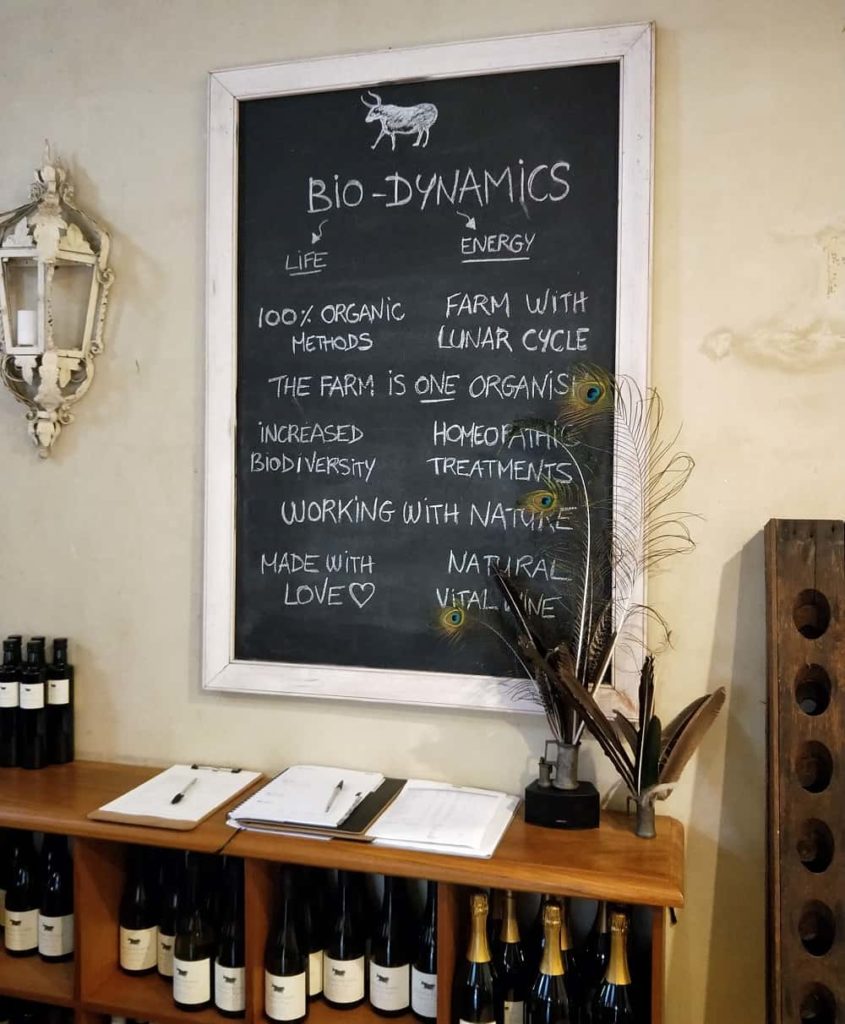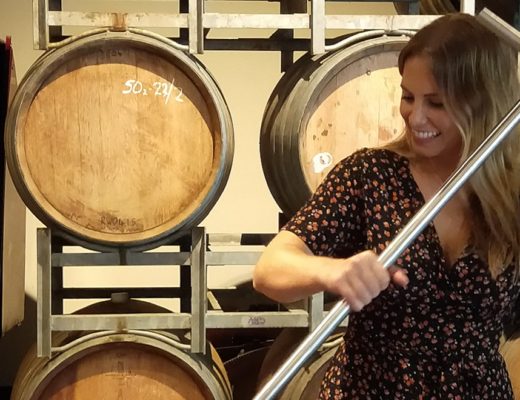Do you know the difference between organic and biodynamic wine? You’ve definitely heard of organic wine by now but what the frilly heck is biodynamic wine? And how does natural wine fit in to this? Let’s take a look at the differences between them and get this thing untangled so you can go back to drinking (organically or otherwise).
Organic wine
The first difference between organic and biodynamic wine is that organic wines are government regulated and certified by a licensed third party. This can vary from country to country but generally means that no artificial chemicals, fertilisers, fungicides, pesticides or herbicides have been used in the vineyard.
In the US, certified organic wine means it’s organically grown (as above) but has no added sulfites. In Europe, certified organic means the wine has been made from organically grown grapes but may have some added sulfites. Australia is the same as Europe but has the limit of total sulfites being 150 parts per million (ppm). Non-organic wine in Australia has a limit of 300ppm to give you some context.
So being organic is generally good but can be tricky and expensive to be officially certified, especially for smaller producers as there are a lot of hoops to jump through and a price tag to match. You might find some wines on your way that are made using organic grapes but not certified organic and these shouldn’t be written off either!
Biodynamic wine
Biodynamic takes the principles of organic wine and takes it one step further with ideas around the vineyard as a whole ecosystem, astrological influencers and the lunar cycle.
The majority of this thinking comes from Rudolph Steiner who’s formulas include following a planting calendar that depends on astrology (stars and shit) and treating the earth as “a living and receptive organism.
Biodynamic viticulture methods can also include stuff like hollowing an animal’s horns, filling them with manure and burying them for six months in winter. This process creates what biodynamic farmers call Preparation 500 and when done properly, 500 is then diluted and used in sprays or compost on the rest of the vineyard for optimum soil and growing conditions. Cool!!
One winery that operates on the biodynamic lunar calendar (and buries the horns filled with sh*t) is Krinklewood in NSW’s Hunter Valley. See their philosophy below and I can confirm their wines are TASTY!

Natural wine
So how do natties fit into this equation? Natural wine will always be organic and may be biodynamic. But for a wine to be natural, these ideas need to be taken in to winemaking where nothing artificial is added and nothing is taken away. Just sweet, sweet grapes and, you know, alcohol. Nice.
Jury’s out on whether you get less violent hangovers on these babies but the theory is – no additives or preservatives, no feeling like your brain is bobbing about in your skull and that minimal movement is needed for at least 24 hours type hangovers.
Of course, natural wines (despite their lack unnatural things) are still alcoholic beverages. And if you drink enough of them without hydration, say hello to that headache you didn’t think you’d get.
If you want to know more about natural wines, read my blog about it here.





No Comments